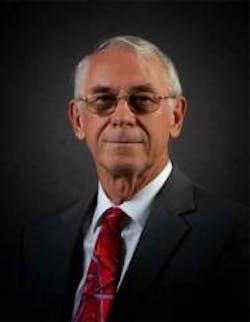Eustace L. Dereniak set to lead SPIE in 2012
| Eustace L. Dereniak (Image courtesy of Margy Green) |
Tucson, AZ--Eustace L. Dereniak, an optical sciences and engineering professor at the University of Arizona (UA), will become president of SPIE in January 2012. He has served in his role at UA since 1979 and also serves as a professor of electrical and computer engineering in the College of Engineering there. During the last five decades, he has explored the frontiers of optics and engineering to help lead to breakthroughs in medicine, military hardware, astronomy, and others.
In Dereniak's university labs, he and his team have advanced methods to capture information at long distances to identify an object from the spectra of light on its surfaceâa technique called snapshot spectroscopy. The technique gathers an instant "snapshot" of all the objects in a field of view (such as a cornea or a military battlefield), rather than taking time to focus on objects at particular points.
Dereniak began his study of optics and engineering at the Michigan Technological University, and continued to his master's in electrical engineering at the University of Michigan (Ann Arbor, MI), and his doctorate in optical sciences at UA.
During the Cold War era, Dereniak worked at the Willow Run Laboratories of the Michigan Institute of Science and Technology on ways to use infrared (IR) technology to detect the electro-magnetic signatures of vehicles re-entering our atmosphere from space.
Dereniak worked at Rockwell International (Anaheim, CA) on optical systems, including cryogenically cooled space-borne telescopes, from 1965â1972. He focused on analog electronics that use super-cooling cryogens like liquid helium, liquid neon, or liquid nitrogen. He worked next at Ball Brothers Research Corporation (Boulder, CO), helping build instruments for weather satellites, again using IR systems in space.
As a professor at UA, Dereniak developed IR systems and detectors, and later studied geometrical optics and the silicon-based IR detectors that play a key role in cryogenic telescopes that deliver high-resolution images.
In the 1980s, Dereniak helped develop IR systems to monitor weapons using spectrometry. He worked with the military on intelligence-gathering aircraft at the research-centered Hanscom Air Force Base (Lexington, MA) and on optics applications like camouflage systems at the U.S. Army's Fort Belvoir (Fairfax County, VA).
After Desert Storm (the Gulf War), Dereniak worked in the 1990s on ways to employ snapshot-image spectrometers to detect missiles launched to attack tanks.
Dereniak has been author or co-author of five books and nearly 100 articles in research journals on topics ranging from IR detection to geometrical optics. He has supervised 28 doctoral students and 34 students at the master's level.
In 2010, the Optical Society (OSA) gave him its Esther Hoffman Beller Medal for outstanding contributions to science and engineering education. He recently received the U.S. Army Commander's Award for outstanding contributions to the Department of Physics at West Point, and in 2006 received the College of Optical Science's Award of Distinction for Undergraduate Teaching.
-----
Follow us on Twitter
Subscribe now to Laser Focus World magazine; it's free!
